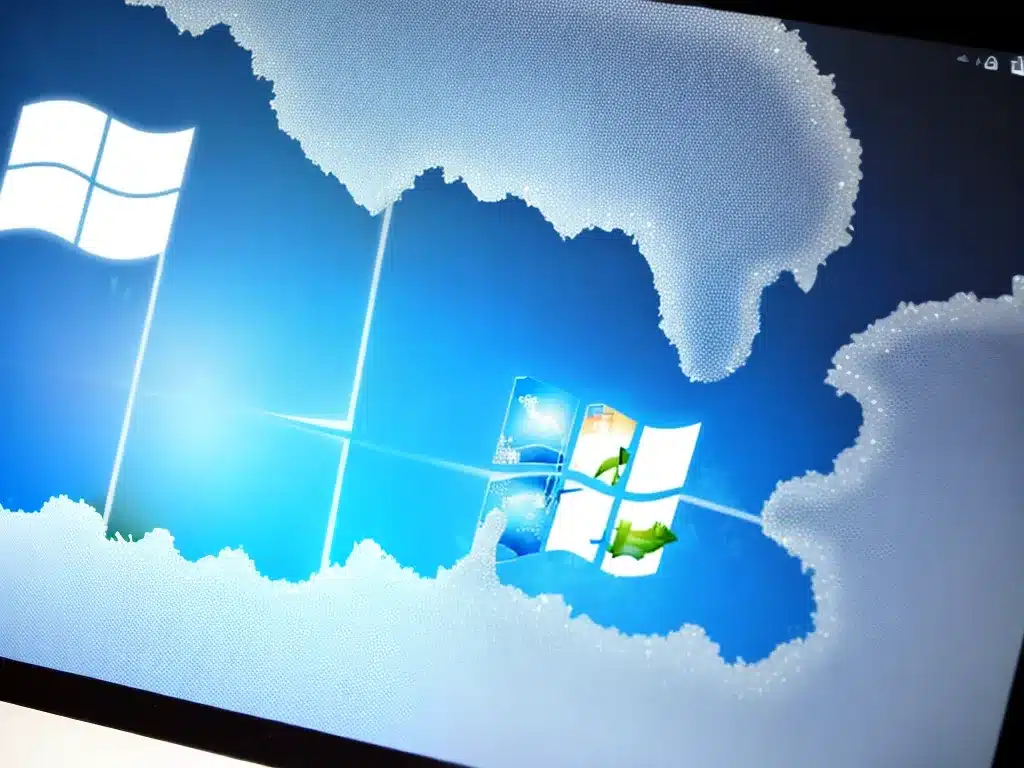
Having issues with Windows Update getting stuck or frozen can be incredibly frustrating. Thankfully, there are several troubleshooting steps you can take to get Windows Update working again. In this guide, I’ll walk through the top solutions for fixing Windows Update when it gets stuck or frozen on your Windows 10, 8, or 7 PC.
Run the Windows Update Troubleshooter
The Windows Update troubleshooter is a built-in diagnostic tool that can automatically detect and fix common issues with Windows Update. Here’s how to run it:
- Open the Start menu and search for “troubleshooting.”
- Click on “Troubleshooting” in the search results.
- Under “Find and fix other problems,” click on “Windows Update.”
- The Windows Update troubleshooter will now run. Follow the on-screen directions and restart your PC if prompted.
The troubleshooter will go through a series of automated checks and repairs to diagnose and resolve problems with Windows Update. This includes resetting Windows Update components, re-registering system files, and checking for corrupt system files.
Restart the Windows Update Service
Sometimes, restarting the Windows Update service can help kickstart it when stuck. Here’s how to do this:
- Press Windows + R to open the Run dialog box.
- Type services.msc and click OK. This will open the Services manager.
- Scroll down and locate the Windows Update service. Double-click to open its Properties.
- On the General tab, click Stop to stop the service.
- Next, click Start to restart the service.
- Click OK to close the Properties window.
Restarting this background service resets the Windows Update components and forces a scan for new updates. This can often resolve issues with Windows Update hanging or freezing.
Reset the Windows Update Components
Resetting the Windows Update components forces a reinstallation of the update client files. Here are the steps:
- Open an elevated Command Prompt (Run as Administrator).
- Type the following command and press Enter:
net stop wuauserv
- Next, run this command:
cd %systemroot%\SoftwareDistribution
- Finally, run this command:
ren Download Download.old
- Close the Command Prompt and restart your PC.
This will stop the Windows Update service, clear the download folder, and then restart it to redownload the setup files. Resetting the Windows Update components in this manner can resolve corrupted files that are preventing updates from installing correctly.
Check Your Internet Connection
It seems obvious, but ensure that you have a stable internet connection. Windows Update requires the ability to download updates from Microsoft’s servers.
Problems like a faulty network adapter, interrupted connection, or incorrect proxy settings can prevent Windows Update from working properly. Make sure your internet access is working normally before troubleshooting Windows Update issues.
Review Event Viewer for Errors
Checking the Event Viewer system logs can provide clues to what is failing with Windows Update:
- Type Event Viewer into the Start menu search box and click to open it.
- Expand Windows Logs > System on the left pane.
- Scroll through the list and look for error events related to Windows Update and install failures.
- Make a note of the error codes and details. Research them to determine solutions.
The event logs record Windows Update client actions and can pinpoint source issues like failing updates or installation problems. The error details provide insight for troubleshooting.
Uninstall Incompatible Software
Some third-party applications and programs can interfere with Windows Update. Antivirus software and tools that modify system settings like VPN clients are known culprits.
Try uninstalling any recently added or suspicious programs and software to see if that fixes Windows Update problems. Reinstall them one by one while monitoring if Windows Update works properly after each installation. This can help identify incompatible applications.
Run SFC and DISM Scans
System File Checker (SFC) and Deployment Image Servicing and Management (DISM) scans check for system file corruption and replace damaged files. To run them:
- Open an elevated Command Prompt.
- Type sfc /scannow and press Enter to run SFC.
- Once it finishes, run DISM /Online /Cleanup-Image /RestoreHealth to run DISM.
- Restart your PC once the scans complete.
SFC and DISM scans can resolve corrupted system files that may be at the root of Windows Update issues.
Reset Your PC
If all else fails and Windows Update is still stuck, resetting your PC may be necessary. This will reinstall Windows and reformat drives while preserving your personal files and settings.
- Open Settings > Update & Security > Recovery.
- Under “Advanced startup”, click Restart now.
- After restarting to the recovery environment, select Troubleshoot > Reset this PC and follow the on-screen instructions to reinstall Windows.
Resetting your PC is a last resort, but can fix Windows Update problems stemming from operating system file corruption or configuration issues. Be sure to backup your data first!
Conclusion
Stuck or frozen Windows Update issues can often be resolved through troubleshooting steps like running the built-in troubleshooter, restarting services, resetting components, checking event logs, and repairing system file corruption. Resetting your PC may be necessary if all else fails. Persistence and systematically working through these solutions can get Windows Update functioning again.












